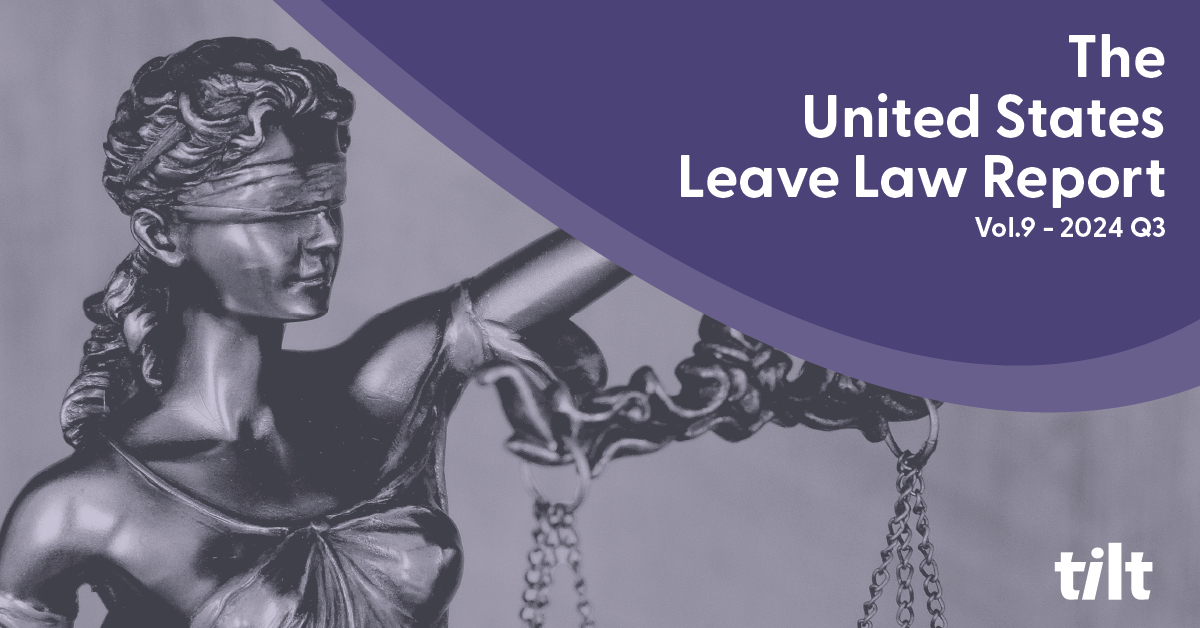Tip-toeing through the requirements of FMLA can trip up even the most surefooted of organizations. That’s why year after year companies face a litany of lawsuits from employees whose protections were either ignored or violated. Oftentimes these mistakes can be easily avoided, so we’ve broken down some of the most common mistakes out there and provided a few tips to help you navigate FMLA and land on your feet.
Mistake 1: Leaving Managers in the Lurch.
Effective managers are informed managers, so isolating them from the leave process is tempting your FMLA fate. While it’s true that managers are the leading cause of employment law violations, sometimes it’s caused by good intentions that are merely misguided, and other times it’s because they are completely insensitive when it comes to taking leave…and this blog post won’t help change personality.
What it can do is underscore the severity of managerial mistakes that can be avoided through improved FMLA communication. The cost of defending an FMLA lawsuit ($80,000 on average) ought to be enough incentive to find a better way to approach it. And it’s not just vocal managers mucking up the process, silent managers can cause process delays that can’t be fixed retroactively.
Avoid leaving managers in the lurch by providing the appropriate amount of information upfront about the type of leave their employee is going on, as well as a laymen’s breakdown of the intricacies of FMLA. Establish an ecosystem where communication between HR, the employee and the manager keeps private information private and need-to-know info in a seamless flow.
Involving managers in the entire journey allows them to stay informed as the leave progresses so they avoid foot-in-mouth moments by making ill-advised contact that could invite FMLA interference claims.
Speaking of…
Mistake 2: A Lack of Discrimination Preparation
As society evolves (and sometimes devolves…), so to does the classification of discrimination. It’s imperative to stay on top of what is considered FMLA discrimination and educate employees thusly.
The U.S. Department of Labor (DOL) outlines the protections an employee has when it comes to FMLA. Companies must avoid violating the protections employees have under FMLA to ensure compliance and stay out of the courtroom.
Retaliation toward an employee taking FMLA is a form of discrimination that can take many forms and is super illegal, so preparing staff by educating them on what is considered retaliation is a critical step in avoiding this mistake.
Educate and prepare your people on the ins and outs of FMLA to mitigate the serious and costly risk of getting it wrong.
Mistake 3: Ignoring the Trends
A common interview trope is to be asked what your greatest strengths are, and inevitably “adaptability” or some variation thereof gets mentioned. Yet when it comes to navigating the FMLA landscape, many organizations assume the trends from yesterday will continue in perpetuity.
FMLA requests are on the rise, and choosing to stick your head in the proverbial sand can leave you high and dry when it comes to People Teams and their capacity to manage leave with any sort of efficacy.
Understanding the time demands your department will face (or are most likely already facing) as FMLA requests continue their upward trajectory will allow you to stay in lock-step with the trends so you can plan and resource your leave management accordingly.
Mistake 4: Documentation Doom
Winging FMLA documentation is a recipe for disaster. A really simple recipe actually: 1-part poor documentation produces 1-part assured disaster. Keeping precise track of an employee’s use of FMLA leave is a tedious, yet critical step to avoid the impending doom of mismanaging your employee’s FMLA.
Intermittent leave is a major trouble spot for this. If not properly tracked your employee might get more FMLA than they should receive, what’s worse, is that you might accidentally count time as an absence that should have been counted as FMLA. If that factors into an employee’s termination in any way it could spell big big trouble for your organization.
Accurate documentation; learn it, live it and rest easy knowing you’re being compliant.
Mistake 5: Re-boarding Breakdown
According to the DOL, the #1 complaint employees have when returning to their job is that they aren’t coming back to the same or equivalent position after their leave. Fun fact: employees are protected from this happening so if this is something that currently happens at your organization (of course it would never happen at your org…) be aware you’re at risk of stepping into some seriously hot water.
Excuses like, “Well we had to refill your position, so since it’s not available we created this similar job,” just won’t fly. “Similar” isn’t good enough in the eyes of the court. If you can’t provide the exact same role, their role must truly be equivalent.
Preparing ahead of time for an employee’s inevitable return to work can help mitigate this mistake by allowing managers to plan their resources and projects accordingly.
Mistake 6: Failing to Notice
Education and communication are common themes when it comes to avoiding mistakes around FMLA. Dropping the ball by not providing the required notices to employees on leave is a communication misstep that might seem more innocuous than the other mistakes, but is against the law. The four notices employers are required to give according to the DOL are as follows:
- Employers must provide a general notice of FMLA right
- Employers must provide an eligibility notice within five days of the leave request
- Employers must supply a rights and responsibilities notice at the same time as the eligibility notice
- Employers must give a designation notice within five business days of determining that the leave qualifies as FMLA leave.
Mistake 7: Not Adjusting Performance Standards
This is yet another opportunity to educate managers and protect your people from FMLA violations. Most managers are beholden to their own performance standards and department goals, and while they may be experts in their field, FMLA experts they are not.
These two dynamics can cause major conflict if not understood and handled properly. While it’s true that managers can take disciplinary action for an employee’s poor performance despite the fact they took FMLA, what they cannot do is take that action if the performance problems are related to their medical leave.
For example, if a manager fires an employee for not reaching a sales quota, but the reason they didn’t meet the sales quota was proven to be because they spent a few months on medical leave, the employee has grounds to seek legal recourse. Companies must adjust performance standards, but only to the extent they are impacted by the medical leave being taken by the employee.
Make No Mistake…
Avoiding the pitfalls of FMLA mishaps is no small feat, and addressing the circumstances that lead to the most common mistakes shouldn’t be taken lightly. This by no means is a comprehensive list of all the mistakes that are made…this is only 7. We could have touched on asking for too much medical information or giving FMLA to ineligible employees, so we hope you take this information and equip your employees with it so you can keep your company protected and your people respected.
About Tilt
Tilt is leading the charge in all things leave of absence management through easy-to-use tech and human touch. Since 2017, our proprietary platform and Empathy Warriors have been helping customers make leave not suck by eliminating administrative burdens, keeping companies compliant, and providing a truly positive and supportive leave of absence experience for their people.







